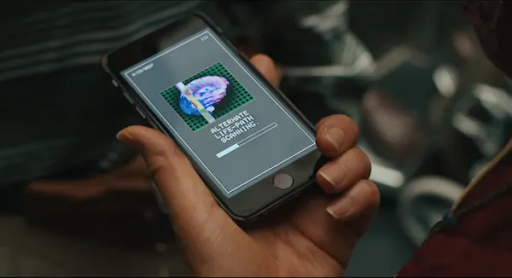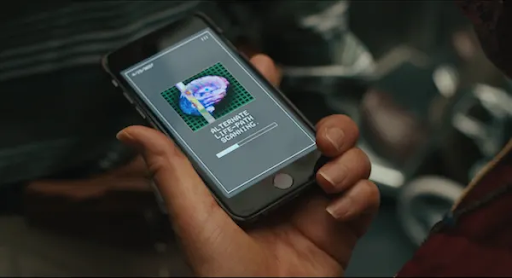By 2025, we will have over 27 billion IoT devices connected to the internet – that’s more than three devices for each person living on Earth. And two-thirds of these persons own a smartphone, which makes them also constantly connected to the internet. No doubt: Everybody and everything is now online all the time. This is how a majority of us live our lives today: Connected! And enabled by technologies.

Never before has the world, its infrastructure, and the people who live here been more connected, and personalization is helping to drive tailored experiences for people while connectivity technologies are helping companies create new products, deliver better services anywhere in the world and realize efficiency gains never thought possible on a massive global scale.
These innovations that were once a pipedream of human ingenuity relegated to sci-fi novels and utopian thought exercises are now our daily reality. But in creating these solutions, questions, and considerations arise. Will these technologies really enhance everyday life, and for everybody? Is the rapid growth of e.g. mobile, AI, and IoT markets addressing the challenges, and are ethics considered for sustainable growth? Are security and privacy concerns taken into account? Or is the industry on another winner-takes-it-all run-away-train to occupy as much new territory as possible no matter what? How do we address these issues head-on?
Background
A very important thing to remember is that these technologies that are rapidly changing our lives are themselves young and therefore rapidly changing. Mobile broadband, Blockchain, and AI really only emerged as fit for daily use in the last ten years, driven by improvements in hardware such as faster processors, and more powerful GPUs to even handle complex AI algorithms and machine learning. However, they are still rapidly evolving fields, and while each new and more powerful version enables new use cases, it also potentially widens the gap between users who can afford the devices capable of using the technologies and those who cannot. Each new use may create a need for agreements on how different constituents want it handled. This requires thoughtful action by the technology providers and other stakeholders, especially because many issues will only be discovered during the actual use of the technologies.
Take this member of the San Francisco police force as an example who needed to figure out how to hand over a traffic violation ticket to a self-driving taxi where there is nobody present to acknowledge the mistake or to hand over a driver’s license and vehicle documents. Such first-time issues will apply to many applications across many industries, from voice assistants and chatbots to augmented reality and AI-generated IP and content.
Let’s explore some of the bright but also the darker sides of the issues that may stem from Connected Life. I also recommend you read the DIGIGRAM article by my friend Yannick Heiniger, Cyber and Technology Diplomacy Advisor to the Swiss government (Wow, what a job title! The fact that we now have such jobs is further proof that what I am writing here is a reality.) Yannick deals with such issues in his work, including some very interesting ones while driving digital transformation at the International Red Cross.
The Bright Side of a Connected Life
As consumers, we use AI and other technologies in our everyday personal lives, sometimes without even thinking. Need proof? Here’s the result of searching for the term “potato” in the iPhoto App on my Mac or iPhone: The results not only show photos of potatoes but even photos containing the text (the photo at the bottom, an image of a restaurant menu that I took). Very clearly Apple is analyzing all the photos I take.

When we wake up in the morning, we ask Siri what the weather will be like when we pick out our outfits. On the drive to work, we use Spotify’s smart algorithm to check our customized playlist based on the music we listen to most. We unlock our phones with powerful image recognition software, check how many steps we’ve walked using mobile health sensors, and pay for our coffee with the swipe of our phone over a smart reader.
These may be obvious benefits of connectivity technologies including increased convenience, improved efficiency, enhanced personalization, and better accessibility. Once we accept that these technologies are beneficial, it is easy to see that they can (and should!) also benefit the larger society. The students who took my “Connected Life” class at UC Berkeley last year proposed new businesses including connecting people for more personal safety, connecting workers to open jobs to solve the post-COVID labor shortage, re-connecting disenfranchised citizens with their local governments for more direct democracy, and creating hyper-local marketplaces to connect neighbors with each other. I am very optimistic about this next generation of entrepreneurs who start businesses that use connected life as an opportunity.
The Dark Side of Connected Technologies-Driven Future
With billions and trillions of data running between devices every second, one of the greatest considerations is around the topics of privacy and security. Connected devices often collect and transmit sensitive data, which can be vulnerable to cyber attacks, breaches, and worse, e.g. blackmail. It is important to implement robust security measures to protect against these risks and ensure the privacy of users’ data. GDPR is Europe’s way to let people decide how much they want their private information to be collected. California is following suit with legislation of its own – CCPA (California Consumer Privacy Act), which was modeled after GDPR. Good for us who live in these jurisdictions. But what about countries with less advanced consumer protection or with cultures (or governments) with less regard for the protection of individuals?
China, for example, is systematically using feeds from publicly mounted cameras to scan people, track their movements, and develop personal profiles including a “social score”, reflecting their behavior. I personally find it scandalous! Read the excellent article in the New York Times about the magnitude of this incursion of privacy.
However, consider this scenario: Good AI needs good data to be trained on. The best AI will quite likely be based on access to the best data. The math is the same for everybody, but the volume and quality of the data are not. Will China, therefore, develop the best AI because of its unlimited ability to collect data and cross-match it with real people’s behavior because of its unrestricted access to personal information? Our dilemma with the use of connectivity technologies will not be a technical question but an ethical one: Will we use the best AI, even if it was developed (ab)using people’s privacy? Ethics violations are one dark side of Connected Technologies.
Another dark side is who has access to the results of connected life improvements. Not everybody can afford the unlimited wireless data plan of telecom providers. This leads to inequalities in access to a connected life, including finding jobs or pursuing an education. Purely commercially driven companies have little interest to provide their services to low-income / low credit-worthiness neighborhoods. Connectivity can be a great equalizer when it comes to seizing opportunities because chances are purely based on real-time access, not on income or race, or ZIP code. Regulators play a vital role to ensure that the playing field is created with equal opportunities for all. Net Neutrality is vital to ensure that “…internet service providers…treat all data…fairly, without improper discrimination in favor of particular apps, sites or services…”. I wholeheartedly agree with this statement by the Electronic Frontier Foundation.
Lastly, environmental impact needs to be considered as well: Blockchain applications such as Bitcoin are regularly criticized for the enormous amounts of electricity they consume: Bitcoin mining worldwide uses more energy than the country Norway according to the Rocky Mountains Institute. It is clear that connected life consumes a lot of electricity.

It goes without saying that the electricity needed to power the connected life must transition to generation with renewable sources of energy.
Connected Life, the Intersection between technologies and real people’s lives
Our lives are increasingly influenced by technologies and despite the conversations around the pros and cons of these technologies, their use will not only continue to grow but increasingly pose questions that we need to answer as a society: Is the protection of personal privacy more important than the quality of technological services? Do we need to slow down the expansion of the use of these technologies so that the transition to sustainable energy sources can keep up? And how to ensure that everybody has equal access to these quality of life improvements and who pays for those who cannot afford them?
And there will be 100s more questions coming our way. If you read this DIGIGRAM article you quite likely will be called to help find the right answers. The use of technologies brings responsibilities – let’s be proactive and let’s consider not only commercial aspects. Connected Life can and should improve the lives of everybody.




Pingback: Gert’s Digigram Newsletter of May 2023! – Gert Christen.org
Pingback: Climate Change As A Business Opportunity – Gert Christen.org